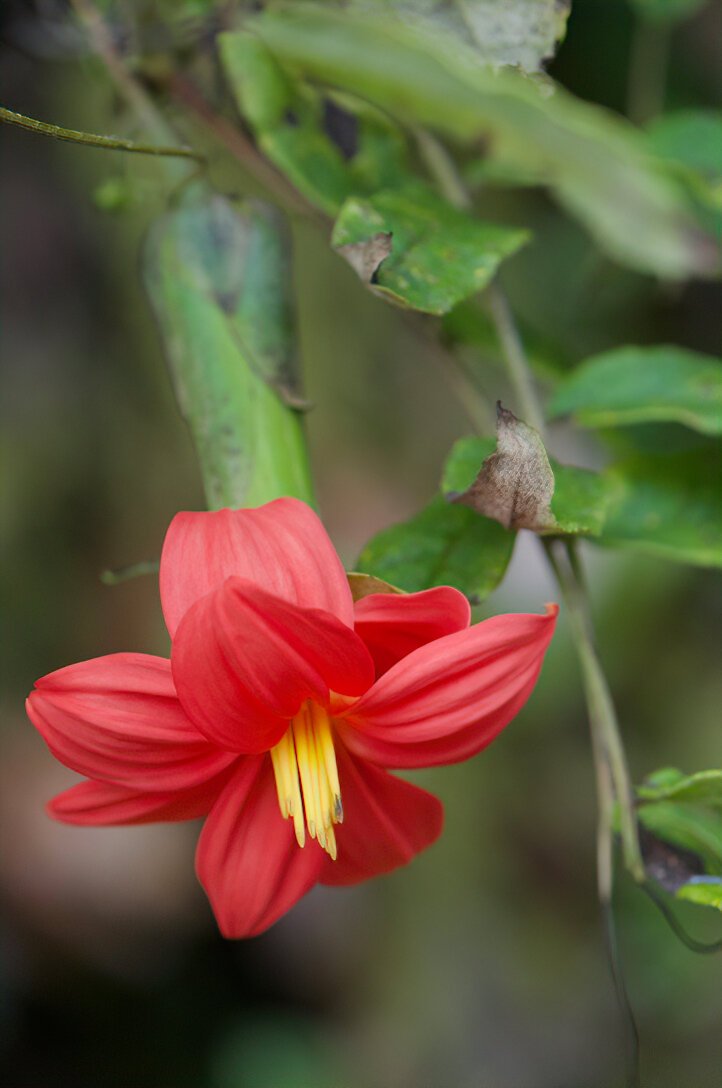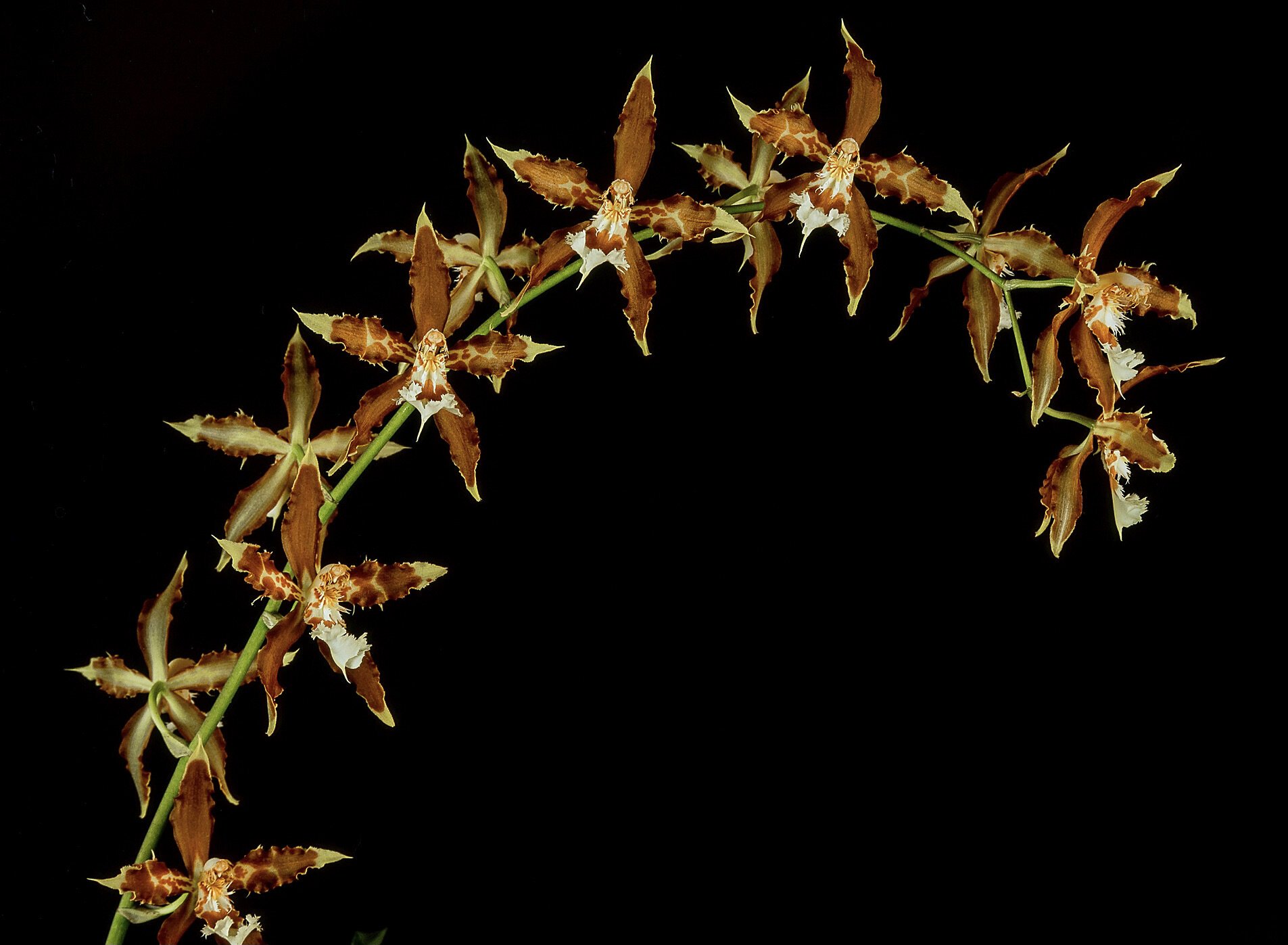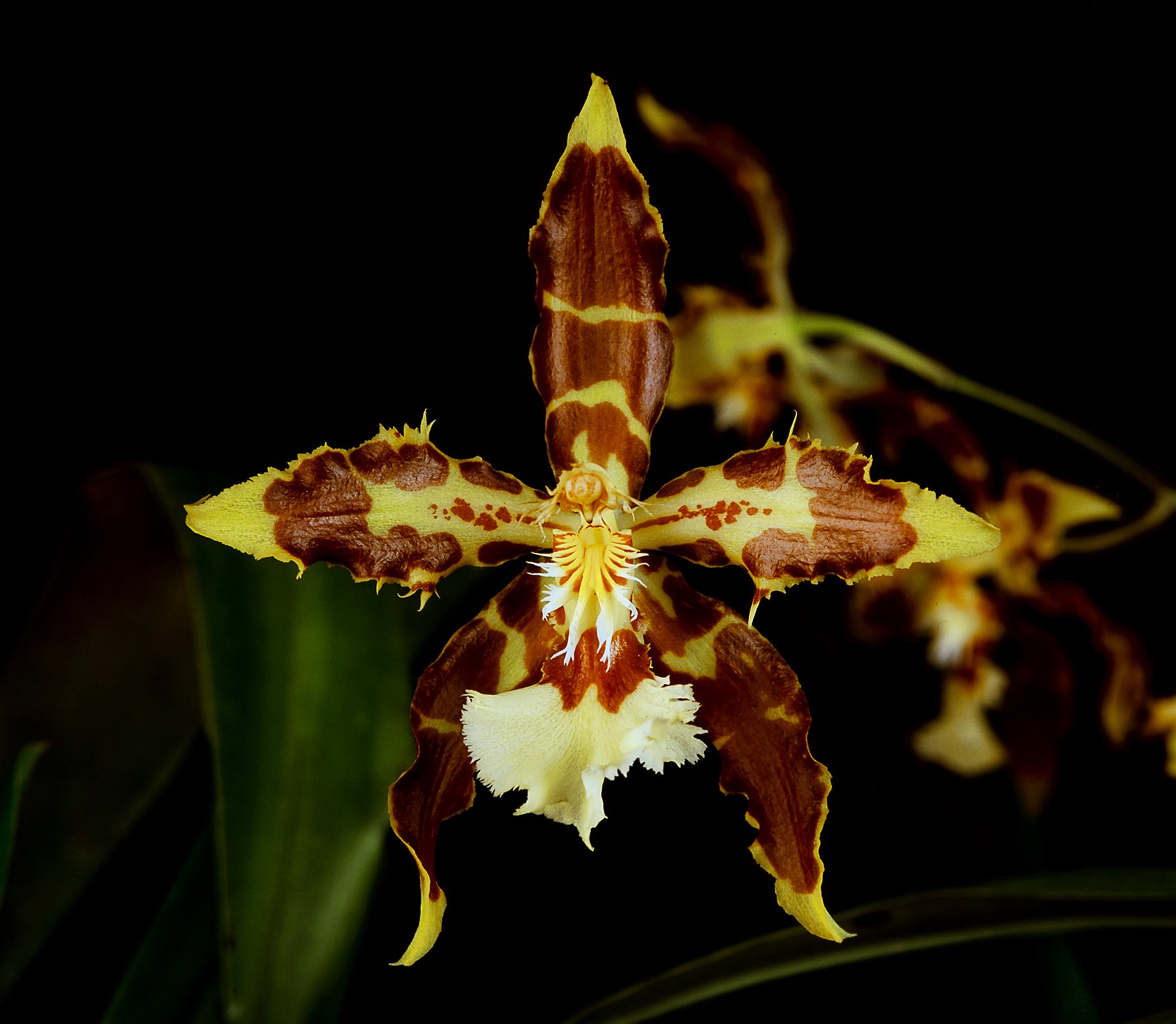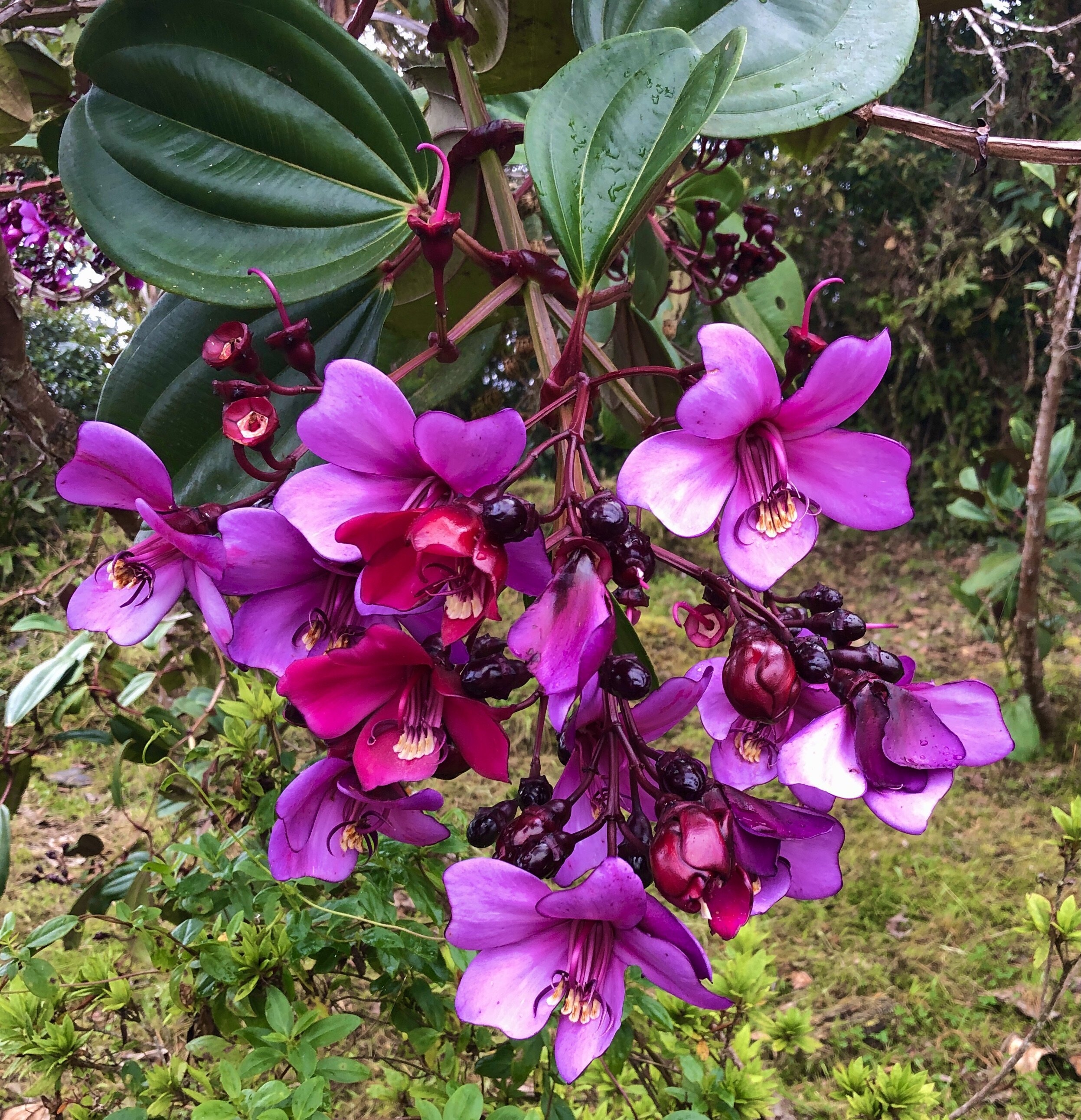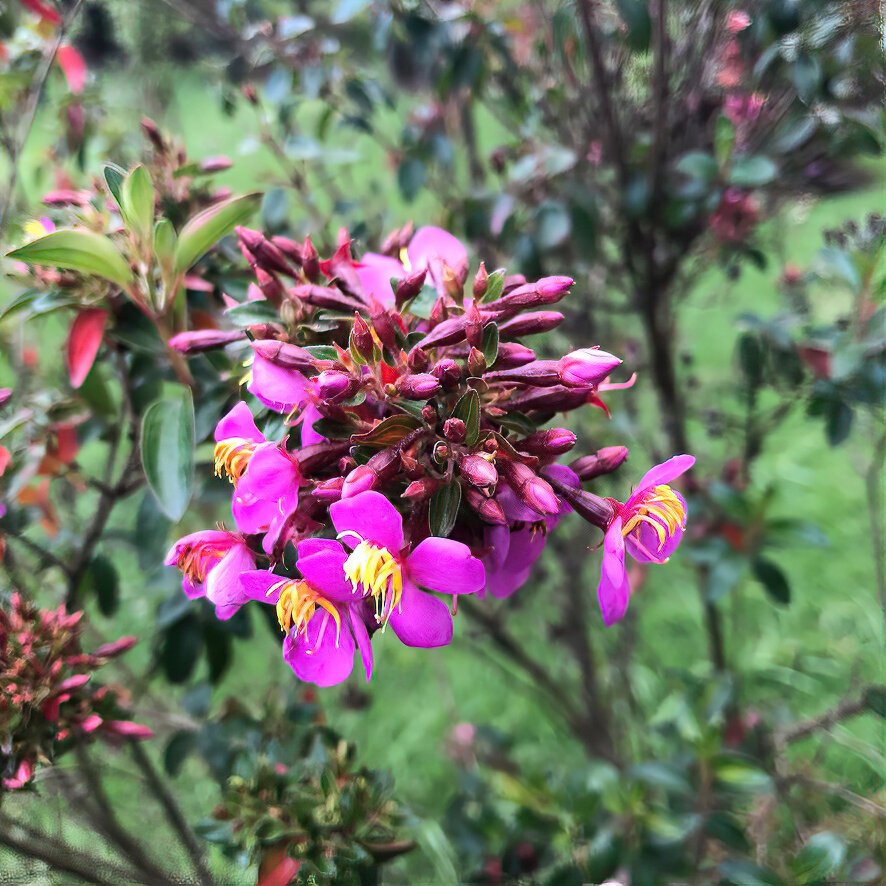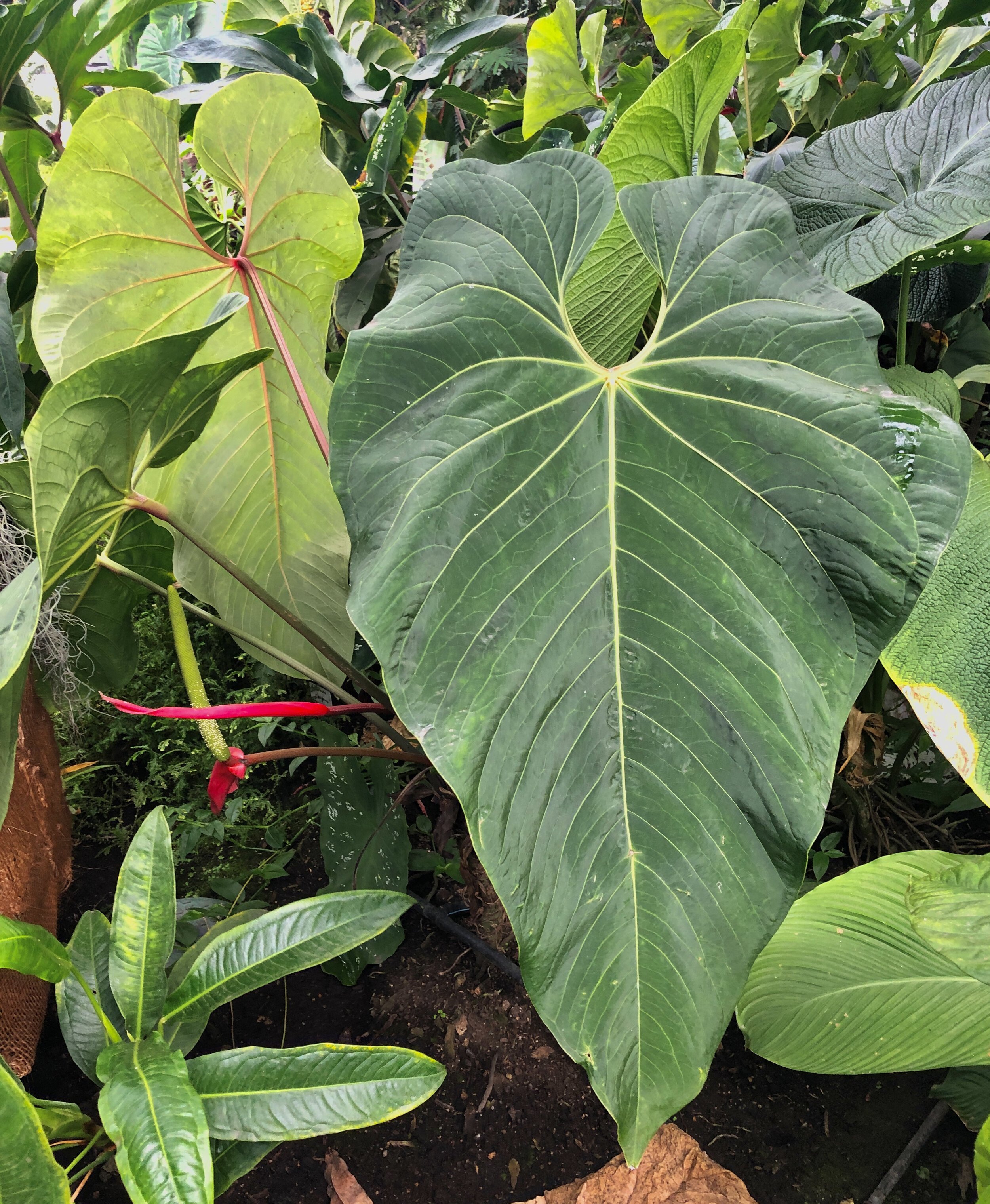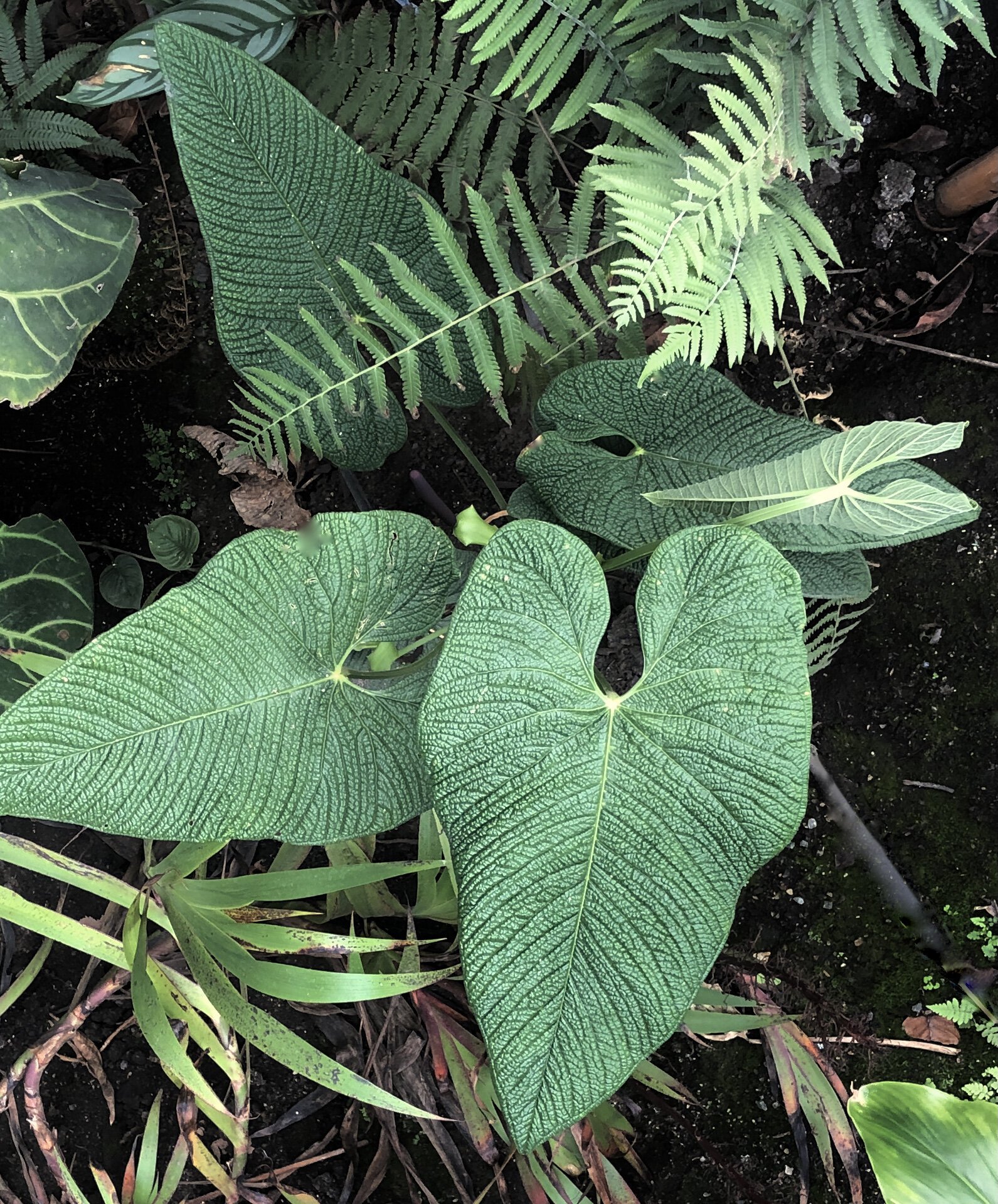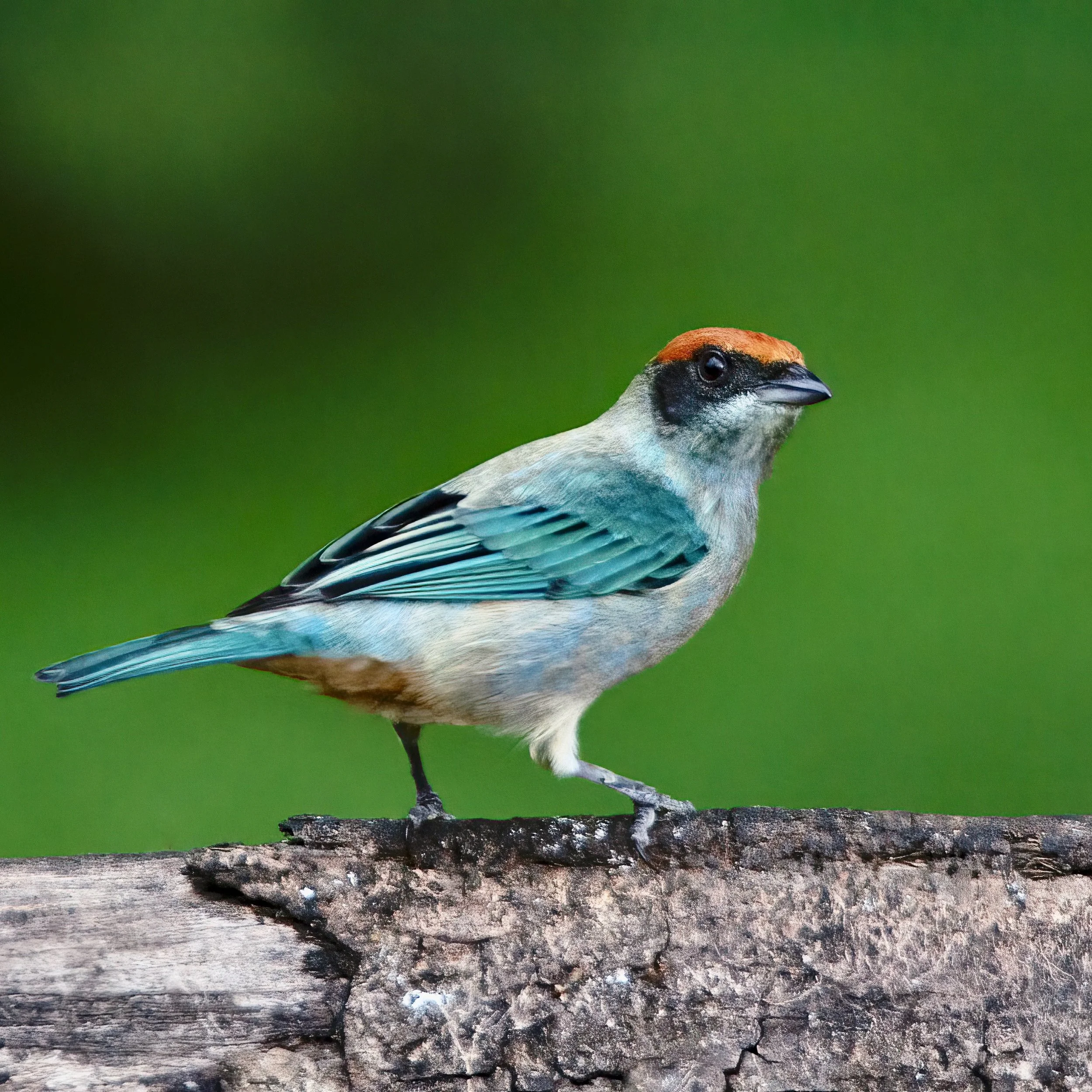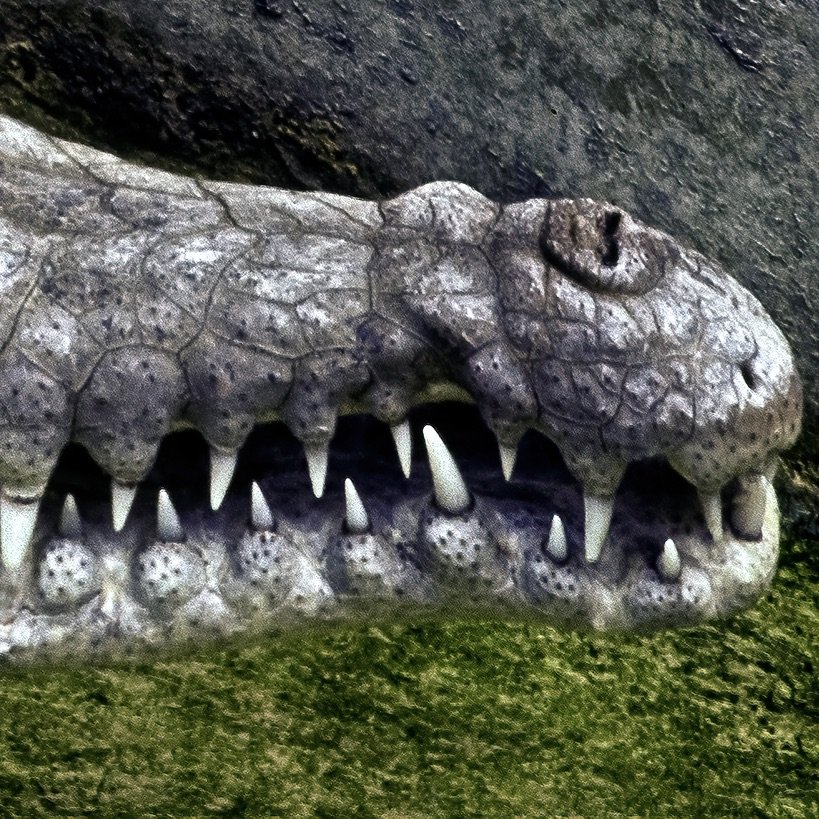TROPICARIO
Revisiting the Legacy of José Celestino Mutis
by Jay Vannini
On a recent trip to Bogotá to visit my compadre and fellow Esotérico Peter Rockstroh, I had the great good fortune to wander the grounds of the city’s botanical garden together with him and his friend, noted local botanist Gustavo Morales.
Gustavo is a force of nature within the ornamental horticulture community in Colombia and possesses a comprehensive knowledge of the taxonomy, distribution and cultivation of native plants that makes him an invaluable resource to all that know him. He is an enthusiastic advocate for use of artificially propagated native plants in Bogotá gardens and has done landscape consulting work for local commercial real estate developers. Known locally as “El Profesor”, he combines this encyclopedic familiarity of local flora and plant propagation with a good-humored, self-effacing manner that is refreshing after dealing with the prima donnas that now dominate the U.S. tropical horticultural scene. His conversation is peppered with fascinating references to, and anecdotes about, historically significant figures that have worked with Colombia’s flora over the past three centuries.
Peter profiles Gustavo and his many “passions” elsewhere on the website: https://www.exoticaesoterica.com/new-blog-1/2018/10/5/andean-passifloras-segunda-parte
Using your back button will return you to this article.
The Bogotá Botanical Garden has a storied history and can trace its origins to the first public garden established in Colombia in 1783, that was founded by renowned Age of Enlightenment scholar José Celestino Mutis at the town of Mariquita in Tolima Department.
The current garden is named in his honor. Its handsome logo is the clavellino (Mutisia clematis), a showy climbing aster endemic to the highlands of Colombia and northern Ecuador. This species was described by Carl von Linnaeus in 1782 and named in its discoverer’s honor (the type specimen is Mutis collection no. 21; 1773).
Shown below left, Mutisia clematis flowering in nature in Cundinamarca Department, Colombia. Image: ©Peter Rockstroh 2021. Right, illustration of M. clematis from the Flora de la Real Expedición del Nuevo Reino de Granada. Image: Archivo Real Jardín Botánico, Madrid, Spain.
José Celestino Mutis depicted examining his namesake, Mutisia clematis. R. Cristobal. ©Wellcome Gallery, London, England/Creative Commons Attribution 4.0 International License.
Mutis (b. 1732 in Cádiz, Andalucia; d. 1808 in Santafe de Bogotá, Colombia), was an acclaimed Spanish botanist, linguist, mathematician, astronomist and priest who in 1760 was appointed personal physician to the Viceroy of the New Kingdom of Granada, Pedro Messia de la Cerda. A polymath in the truest sense, Mutis’ scientific interests were incredibly diverse and included natural history. Following two decades of appeals to the Crown, in 1783 he was chosen by King Charles III to lead the royal-sponsored botanical and zoological surveys of what is now the country of Colombia. The multivolume Flora de la Real Expedición del Nuevo Reino de Granada (published in 1783-1816; republished in 1985 by Cultura Hispanica, and again as an abridged version by Villegas/Lunwerg Editores in 1992) was, at its peak, the product of a collaboration of 35 artists and collectors near the time of his death. The hundreds of beautifully executed colored plates in these publications make it a must-have item for the libraries of collectors of botanical art.
The arborescent showy mistletoe, Aetanthus mutisii, another of Mutis’s great finds in high elevation ecosystems near Bogotá. This extraordinary parasitic tree was later collected in the same region by Alexander von Humboldt and Aimé Bonpland, and described by Karl Kunth in 1818. Author’s image.
The original garden that Mutis founded in Mariquita focused largely on plants of economic interest to the Crown, especially quinine, cotton, anil, tobacco and the rare native canelo spice (Ocotea quixos). In 1791, then Viceroy José de Ezpeleta decided to move the seat of the Royal Botanical Expedition to Santafe de Bogotá. Mutis complied and established another research garden and herbarium on a site that now houses the Palacio del Nariño, official residence of the President of Colombia. During the early days of the independence movement in Colombia in 1816, the Royal Expedition, its plant house and garden were shuttered and all the collections sent to Europe (M. Diazgranados, 2015).
While the illustrations produced for the Expedition ended up in the Royal Botanical Garden in Madrid where they are housed today, his preserved botanical specimens were sent to Paris and the National Museum of Natural History there.
The current city botanical garden was founded in 1955 and covers roughly 50 acres/20 ha. It houses more than 20,000 plants from over 2,400 species. Many of the garden’s plants originate from the Bogotá plateau and other high elevation ecosystems throughout the central and southern parts of the country. Bogotá’s cool, humid climate makes it an exceptionally good location to cultivate and display plants native to Andean cloud forests and páramos.
Colombia is widely recognized as one of the world’s most biodiverse countries, yet the true scope of of its floral and faunal diversity remains very much an open question since large areas remain unexplored or poorly known by zoologists and botanists. Purely on a species number per square kilometer basis, Colombia is now considered THE world’s most biodiverse country (World Wildlife Fund, 2017). Even so, it is very likely that the numerical diversity of flowering plants, ferns and their allies, and bryophytes remains significantly under-counted, likely by very big numbers.
The large National Parks that protect páramo ecosystems and upper Andean forests located near Bogotá (Chingaza to the east and Sumapaz further south) provide a covenient window to view some of the country’s amazing upper elevation landscapes, plants and animals.
Mass flowering of large agave-sized frailejones (Espeletia grandiflora) in páramo at ~13,000’/4,000 masl in Bogotá’s adjacent Chingaza National Park. Author’s image.
Shown below, the city must also have one of the most striking official symbols of any major municipality: La Flor de Bogotá (Odontoglossum luteopurpureum). This very showy cloud forest orchid species is endemic to Andean Forest ecosystems in Colombia between 6,000 and 9,500’/1,850 to 3,000 masl. Images below, scanned from 35 mm slides, courtesy of ©Fabian Alzate 2021.
While the garden itself is remarkable in many ways, it is the newly inaugurated Tropicario complex that is the crown jewel of the grounds. Designed to replace a blocky, 1970s-era greenhouse complex located on the same site, design and construction of the new facilities were opened to local bid by the municipality in 2014.
The contract was awarded to De Arquitectura y Paisajae (DARP) that same year with company co-founders Jorge Buitrago and Jaime Cabal as project directors. Also involved in the development and execution were local structural engineers CNI Ingenieros, and prime contractors JMBC and JCM consortiums.
Ground broke on the new facility in 2016. Several excellent videos are available online showing construction progress on site during the next four years. The Tropicario was inaugurated in early 2020 but, like so many celebrations that were programmed around the world last year, the opening was muted by the severity of the COVID pandemic in Colombia.
Above, the garden has an excellent collection of arborescent melastomes, including many of the most showy flowered species in the family. Left, Meriania nobilis which, together with the orange-flowered M. hernandoi–also grown in this collection–are some some of the world’s most beautiful small trees. Right, an inflorescence on the shrub, Bucquetia glutinosa. Author’s images.
The greenhouse complex, comprised of six structures, covers approximately 40,400 sq. ft./3,750 sq. m. The two tallest rooflines are at 65’/20 m. Each module has an oculus in the roof dome for rainwater capture and ventilation throughout is almost entirely non-mechanical.
The complex was specifically designed to complement the canopyscape of an existing wax palm collection as they head for mature heights of ~100-190’ (31-60 m). Stands of magnificent Quindio wax palms (Ceroxylon quindiense), the world’s tallest monocotyledon, frame the complex. In all, seventy beautifully grown wax palms, mostly mature specimens that include all seven native species, surround the Tropicario complex. They are very much emblematic of the garden.
There are six display modules: Bosque Húmedo (Wet Forest), Bosque Seco (Dry Forest), Colecciones Especiales (Special Collections), Plantas Útiles (Useful Plants), Superpáramo (Páramo) and the Biodiversario (Biodiversity Center). The Wet Forest Greenhouse is further divided into sections showcasing the megadiverse floras of the Chocó in western Colombia, and the Amazonian forests located in the southeast.
Image left, a section of the Tropical Dry Forest display showing a young Cavanillesia chicamochae. These bottle trees are known locally as barrigón (potbelly) and can attain massive proportions and contorted shapes. The greenhouse has a very realistic replica of a fully mature tree located towards the exit. Also planted here, a trio of the unusual Colombian dry forest endemic cycad, Zamia encephalartoides.
Besides continuous planting of new live accessions, final touches to the buldings and footpaths are ongoing.
I’ll let the images included here speak for themselves. Access throughout most of the Tropicario is excellent. Its bilingual signage is professionally executed and informative, and the emergent tree mockups are the best I have seen anywhere. The plantings are very much a work in progress and will take at least several more years to fill out. Much of the Wet Forest display has filler plants installed in the meanwhile, especially with a native ginger (Renealmia sp.). Likewise, the Dry Forest exhibit still has legacy Mexican and Peruvian stem succulents awaiting replacement with native xerophytes.
The existing displays already showcase important collections of native cycads, heliconias, aroids, passion flowers, flowering trees and economically valuable/medicinal plants.
Above, the Tropicario houses a wide variety of Colombian ornamental Anthurium species, including–left to right–the oft misidentified Bogotá plateau endemic A. metallicum, A. corrugatum and A. queremalense. Author’s images.
I think most first-time visitors, especially tourists from northern cities that pride themselves on their botanical gardens, will be astonished when they see the amazing result that the Bogotá Mayor’s office, the architectural designers, and José Celestino Mutis Botanical Garden staff have achieved in integrating a group of hyper modern structures into an older cool tropical garden setting. As the plantings increase in diversity and mature, the Tropicario will display a huge representative selection of Colombia’s uniquely diverse flora.
Admission price will also astonish visitors from the U.S. and Europe used to price gouging by many large public gardens: Colombian nationals, COP 10,000 (USD 2.65) including access to the Tropicario. Foreign visitors COP 15,000 all in (USD 4.00). Children under five and adults over 62 are permitted free entry.
Jardín Botánico de Bogotá José Celestino Mutis
Avenida Calle 63 No. 68-95
Bogotá, Colombia 11071
Open daily from 0800 hrs to 1700 hrs on weekdays (entrance gate closed for one hour at midday) with guided tours available on weekends from 0900 hrs to 1700 hrs.
Peter Rockstroh and Gustavo Morales, probably exhausted after hours of answering my torrent of questions about the gardens. Image: ©Jay Vannini 2021.
Many thanks to Gustavo Morales for taking almost a half day out of a very busy schedule to guide us through the gardens. As mentioned above, he is a gracious, knowledgeable and enthusiastic booster of the Tropicario, the open air plantings, and other floral inhabitants of the Bogotá-José Celestino Mutis Botanical Garden. I am grateful to Peter for scheduling this very rewarding visit for me while I was in Colombia recently.
Thanks also to Fabian Alzate for his images of La Flor de Bogotá, Odontoglossum luteopurpureum. Speaking from personal experience, Fabian is not only an extremely talented nature photographer, instructor and professional photo editor, but is also a fantastic all-round field companion. Fabian taught me more about the extracting desired results from my recent vintage Nikon DSLR in a one day shoot at a private reserve outside Bogotá than I could have learned in months wrestling with the owner’s manual.
His superb images of Bogotá plateau orchids, mostly shot in situ, are shown here: https://www.exoticaesoterica.com/new-blog-1/2021/3/4/up-close-and-personal-fabian-alzate
In closing, I’m not a fan of carrying loads of heavy photographic gear to zoos, public aquaria and botanical gardens. All images included here were taken on a smartphone, with the exception of Fabian’s orchid shots, Peter’s Mutisia closeup and my Espeletia landscape image.
All Images: ©Exotica Esoterica LLC® 2021, ©Jay Vannini 2021, ©Peter Rockstroh 2021, ©Fabian Alzate 2021, the Wellcome Gallery, UK and the Archive of the Real Jardín Botánico de Madrid.
Follow us on:

